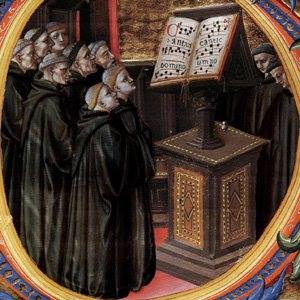Tomorrow is Saint Luke’s Day. I’m preaching, so here’s a little bit of my thoughts in preparation for this day.
Like so much of early-church history, we do not have clear evidence about Luke until the fourth century, and then have little with which to evaluate the tradition. The Anti-Marcionite Prologue to the Gospel of Luke is the fullest of ancient accounts, and may well have its roots in the second century
Εστιν ο αγιος Λουκας Αντιοχευς, Συρος τω γενει, ιατρος την τεχνην, μαθητης αποστολων γενομενος και υστερον Παυλω παρακολουθησας μεχρις του μαρτυριου αυτου, δουλευσας τω κυριω απερισπαστως, αγυναιος, ατεκνος, ετων ογδοηκοντα τεσσαρων εκοιμηθη εν Θηβαις τη μητροπολει της Βοιωτιας, πληρης πνευματος αγιου.
Est quidem Lucas Antiochensis Syrus, arte medicus. ut eius scripta indicant, Greci sermonis non ignarus fuit. discipulus apostolorum, postea vero Paulum secutus est usque ad confessionem eius, serviens domino sine crimine, nam neque uxorem unquam habuit, neque filios procreavit. LXXXVIIII annorum obiit in Boeotia, plenus spiritu sancto.
Saint Luke is an Antiochene, Syrian by race, physician by trade. [As his writings indicate, he was not ignorant of the Greek speech.] He was a disciple of the apostles, and afterwards followed Paul until his martyrdom, serving the Lord without distraction, unmarried and childless. Being of 84 [or 89] years, he slept in Thebes, the metropolis of Boeotia, full of the holy spirit.
The Panarion of Epiphanius of Salamis also adds that Luke was one of the 72 sent out by Jesus. Even though that seems too fitting with Epiphanius’ numerology, the gospel reading for tomorrow is the account of the sending out of the 72 from Luke’s Gospel.
In addition to this is the tradition of Luke as the proto-iconographer, painting the Blessed Virgin Mary upon meeting with her. I have seen the Shaghurah of Saidnaya, but there are other icons in Greece, Cyprus, Moscow (Theotokos of Vladimir), Poland (Black Madonna of Częstochowa) and Kerala that are associated with Luke too.
Putting the tradition together, we have the story of Luke from Antioch, which was one of the greatest university cities of the time, highly educated and a physician. He may have been one of the 72 sent by Jesus, but I feel a little dubious about the tidiness of that. He was the companion of Paul, getting mention in Philemon 24, Colossians 4.14 and II Timothy 4.11. The eponymous gospel and the Acts of the Apostles form a common corpus and are the work of one who is highly educated (it’s the best Greek in the New Testament). The tell-tale we sections in the latter book suggest that the author was present for a few sections of the apostolic journeys he recounts. Luke’s writing is the most vivid, capturing people and personalities, so that if he were not an actual iconographer, his gospel is the icon he painted. That he remained a busy servant of the church — not settling down as husband, father and local GP — dying in his eighties in southern Greece seems all quite believable.
Here’s a list of things I think we can learn from our tradition of Luke’s discipleship
- Education: Luke used and celebrated his education in his service to Christ. I feel that he would want no part with those who trade in dumbed-down Christianities, creationists and the like. But he was no sneering don either; his writing shows that he wore his learning lightly, had a personal touch, even a good bedside manner.
- Healing: Luke was a healer following the Master Healer Jesus. He dedicated his life to bringing that peace and wholeness to others, and we can see his concern for this in his tender accounts of those who seek healing in his gospel and the Acts. The church has a history of being pretty hurtful and toxic, creating warped personalities in its service. We need to move from an idea of pastoral work being like fire fighting to seeing it encompass the whole of church life.
- Intermediary: Luke was no leader, but neither was he just a sheepish follower. He was one of those who has the blessed gift of facilitating from alongside others, encouraging and inspiring. Seeing as ‘hierarchy’ is a church word in origin, I think we need to learn more how to do horizontal structures rather than the old vertical call-and-obey.
- Icon: Luke is an icon. As icons are windows on the divine, Luke’s life and work point ever away from himself towards God. Perhaps this is partly what the Prologue means when it says that Luke was full of the Holy Spirit, that he was translucent with God.
- Immanence: The gospel reading ends with the words given by Jesus to the 72 to announce “The kingdom of God is near you”. This isn’t ‘the end is nigh’, it’s about God’s close concern and immanent action in our lives. I think this summarises Luke’s life and works well.

Pingback: Свеча - православный блог
Pingback: Свеча - православный блог
Pingback: Свеча - православный блог